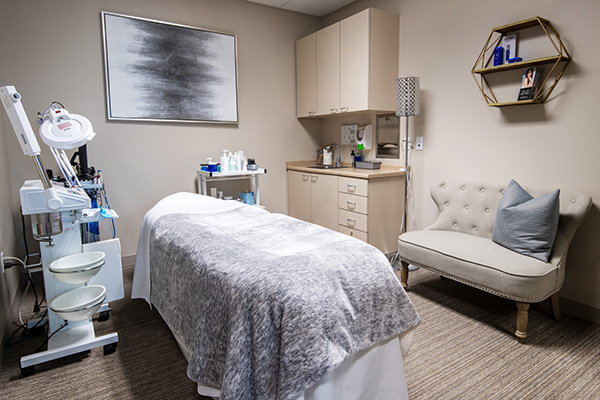Introduction: Comprehending Fat Transfer Procedures
In current years, plastic surgery has seen a surge in appeal, mostly due to developments in strategies and technology. Amongst the different procedures offered, fat transfer has become a preferred choice for those seeking natural-looking enhancement. From breast augmentation to facial renewal, fat transfer uses many benefits, consisting of reduced recovery time and lowered risks connected with synthetic implants. This detailed guide intends to debunk "The Anatomy of an Effective Fat Transfer Treatment Explained", providing in-depth insights into what makes this procedure effective.
What is Fat Transfer?
Fat transfer, likewise referred to as lipofilling or fat grafting, includes drawing out fat from one area of the body and injecting it into another. This method is typically made use of for boosting body contours, enhancing volume in locations like the breasts or butts, and invigorating the face. Unlike conventional breast enhancement that utilizes implants, fat transfer breast augmentation utilizes your body's own fat, making it a more organic approach.

Why Select Fat Transfer?
Many people prefer fat transfer over other approaches due to its natural outcomes and double benefits: they can shed excess fat from areas where it's unwanted while adding volume where it's wanted. Furthermore, the risk of allergic reactions is minimal because there are no foreign materials involved.
The Benefits of Fat Transfer Breast Augmentation
Natural Appearance: One of the primary reasons females opt for fat transfer breast enhancement is the boosted natural appearance it provides compared to traditional implants.
Dual Procedure: Patients can contour their bodies by eliminating fat from locations like thighs or abdomen while acquiring volume in their breasts.
Reduced Threat of Rejection: Because the treatment uses your body's own tissue, there's considerably less chance of a negative reaction.
Minimal Scarring: Small incisions produced gathering fat result in less obvious scars than traditional surgical methods.
Less Complex Recovery: Lots of patients report much shorter recovery times compared to implant surgery.
The Anatomy of an Effective Fat Transfer Procedure Explained
An effective fat transfer treatment hinges on several critical elements that add to ideal outcomes. Here's a detailed breakdown:
Preoperative Assessment
Before undergoing any surgery, thorough assessment with a certified surgeon is necessary. Throughout this phase:
- Patients discuss their objectives and medical history. A physical examination determines suitable donor sites for fat removal. The cosmetic surgeon evaluates skin problem and general health.
Understanding these elements breast augmentation near me assists in crafting a customized surgical plan tailored particularly to you.
Selecting Your Cosmetic surgeon Wisely
Choosing a knowledgeable board-certified plastic surgeon is paramount for any cosmetic treatment-- specifically one as complex as fat transfer. Look for surgeons who concentrate on both liposuction and breast augmentation surgical treatments near you.
Harvesting Fat: Methods Used
The technique utilized to gather the fat greatly affects the success rate of your treatment. There are various methods available:
- Tumescent Liposuction: Includes injecting saline service into the target area before drawing out fat cells. Power-Assisted Liposuction: Utilizes vibration innovation to assist in easier extraction. Ultrasound-Assisted Liposuction: Utilizes sound waves to liquefy fats before suctioning them out.
Each approach has its advantages and disadvantages based on your particular requirements and body type.
Processing the Drawn out Fat
Once collected, the extracted fat must undergo processing to different practical cells from pollutants such as blood and oil:
Centrifugation: This approach spins the extracted fat at high speeds to isolate healthy adipose cells.
Filtration: Some cosmetic surgeons choose purification rather of centrifugation to get rid of unwanted debris.
This precise preparation makes sure just premium cells are reinjected into targeted areas.
Injection Strategies Matter
How and where the processed fat is injected breast augmentation plays a vital role in achieving wanted results:
Layered Injection Technique: Injecting small amounts of fat at varying depths enables much better integration with surrounding tissues.
Micro-Injection: Making use of small cannulas makes sure precision placement while minimizing trauma.
These advanced techniques contribute significantly to optimizing survival rates of transferred fats-- leading ultimately to enhanced visual results.
Aftercare Following a Fat Transfer Procedure
Proper aftercare is essential post-surgery for both recovery and attaining ideal outcomes:
Follow-Up Appointments: Routine check-ins with your surgeon assistance keep track of healing progress.
Activity Restrictions: Avoid strenuous activities that might disrupt recovery during early recovery phases.
Compression Garments: Wearing these can help in minimizing swelling around donor sites while supporting recently enhanced areas.
Hydration & Nutrition: Staying hydrated and maintaining balanced nutrition contributes positively towards recovery speed and overall health throughout this period.

FAQs About Fat Transfer Procedures
1. The length of time does a typical fat transfer treatment take?
A standard session usually lasts between 2-4 hours depending on the intricacy involved with both harvesting and injecting processes.
2. Exists any downtime connected with this procedure?
While most clients can return home within a couple of hours post-surgery, complete recovery might take weeks; nevertheless numerous resume light activities within days following surgery.

3. Will my outcomes be permanent?
While some transferred fats might be reabsorbed by your body over time (generally around 20%-40%), staying volumes generally last long-term supplied you maintain stable weight levels post-procedure.
4. Can I combine this procedure with other surgeries?
Yes! Numerous people pick combinations such as tummy tucks or facelift treatments along with their lipofilling sessions for thorough outcomes customized towards personal goals!
5. Do I require general anesthesia throughout surgery?
Most commonly regional anesthesia combined with sedation is sufficient; nevertheless options depend on client preferences together with surgeon suggestions based upon particular circumstances experienced throughout consultations!
6. Exists any scarring after going through lipofilling?
Incisions made throughout harvesting procedure tend towards very little scarring; nevertheless diligent post-operative care improves healing leading towards even lesser visibility!
Conclusion
"The Anatomy of a Successful Fat Transfer Procedure Explained" showcases just how transformative this innovative technique can be-- offering individuals not only aesthetic enhancements however likewise renewed self-confidence rooted deeply within themselves! By understanding each step involved-- from preliminary assessments through postoperative care-- you equip yourself fully ready taking on decisions regarding potential surgical treatments consequently ensuring rewarding experiences throughout entire journey ahead! If you're thinking about choices like breast enhancement surgery near me or exploring innovative techniques such as "fat transfer breast enhancement", bear in mind that understanding truly empowers choices leading towards finest possible outcomes lined up carefully with individual desires changing visions into reality!
This post serves as a comprehensive guide on comprehending every aspect associated particularly concerning successful executions regarding procedures surrounding efficient use pertaining fatty tissues while attending to concerns aiming promote security together with fulfillment amongst prospective prospects looking enhance lives through cosmetic transformations!